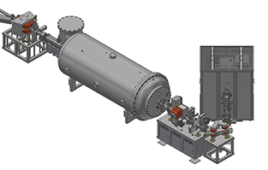 With the U.S. seeking energy independence, as well as trying to boost its economy, renewable energy sources seem a feasible fit. From biofuels to solar and wind energy, the U.S. is diving into the technologies and processes that make these energy sources viable.
With the U.S. seeking energy independence, as well as trying to boost its economy, renewable energy sources seem a feasible fit. From biofuels to solar and wind energy, the U.S. is diving into the technologies and processes that make these energy sources viable.
Yet, the U.S. has also placed strict demands on renewable energy regarding environmental restrictions. Windmill permitting is becoming harder due to protecting endangered birds—like Eagles—from dying, and the same is true for solar thermal.
The U.S. has also seen terrible repercussions environmentally from the dramatic increase in shale oil production. “This increase came about due to national security concerns of relying on foreign oil,” says Andrew Yakub, CEO of Rayton Solar in an interview with R&D Magazine.
Fortunately, shale oil isn’t the only solution to national security concerns. And, if done right, renewables will be a solution. And while renewables have little to no negative effects on the environment (besides for some birds caught in windmills), renewables must also compete price-wise with fossil fuels, which has been the greatest issue to commercializing of some.
Since President Obama took office, the amount of solar power installed in the U.S. has increased from 1.2 GW in 2008, to an estimated 21.3 GW as of the end of the first quarter in 2015. This is the equivalent of 4.3 million average American homes, and is the largest sector of renewables in the U.S.
Residential and small commercial solar installations are beginning to reach a capacity higher than the traditional utility scale farms. And as the industry has seen a huge growth, some companies are going public. Looking to ride the wave of this rapid growth, Rayton Solar is manufacturing solar panels that are 60% less expensive and 25% more efficient than the industry standard.
“This trend is great for Rayton because that distribution channel is easier to use than the more traditional solar farms that require time-consuming permits and power purchase agreements with the utility,” says Yakub. “Also, creative financing is being developed for residential and small commercial which offers payment security to companies.”
The solar panels of today
In 2011 and 2012, the Chinese government heavily subsidized their solar industry. This dropped the price of solar panels worldwide and, as a result, manufacturers outside of China couldn’t compete. “The Chinese factories were able to sell panels for less than they were making them, forcing a significant number of non-Chinese manufacturers to go out of business,” says Yakub. “A total of 35 solar manufacturers went out of business in 2012.”
Now, trade tariffs have gone into effect to prevent the Chinese from dumping cheap panels on the market. And U.S. manufacturers must catchup and build solar technologies that “even these cheap subsidized panels could not compete with,” says Yakub.
Silicon photovoltaics are the norm for solar energy in the U.S. as they have the least impact on the environment. The photovoltaics can be deployed modularly, and the material used is non-toxic to the environment. Most silicon photovoltaics can also compete pricewise with fossil fuels.
Silicon solar panels are currently made by using an ingot of silicon, which is made by growing a single crystal of silicon. The ingot of silicon could take up to a month to grow, and requires high temperatures, making the process expensive. After full growth, the ingot is cut into wafers using a diamond-coated steel wire.
“Since the diamond wire is 200 microns thick, you lose in saw dust the same amount of material you yield in the wafer,” says Yakub. Additionally, the wafer can’t be cut thinner than 200 microns due to mechanical friction. Wafers are needed because of the other processing steps required to make a cell.
However, Rayton Solar replaces the ingot cutting step in their process to developing solar panels. “Instead of a saw, we use a particle accelerator,” says Yakub. “This does away with the waste from the sawing of the ingot, allowing us to get a much higher yield per kilogram of silicon. Additionally, we can cut significantly thinner wafers.”
In the process, a particle beam is used to implant protons 4.7 microns deep into an ingot of silicon. “This layer of protons reforms back into hydrogen gas,” says Yakub. And this cracks the crystallized silicon along the face of the implanted protons. A 4.7-micron-thick layer of single-crystal silicon can then be removed.
“The super thin layer is then further processed into a solar cell by adding a negative junction layer, an anti-reflective coating and other standard steps,” says Yakub.
The future of solar energy technology/processes
It’s been predicted by the International Energy Agency that solar will be over 50% of the world’s energy source by the year 2050. However, right now, it’s less than 1%.
Historically, the demand for silicon has been in the semiconductor industry where the process to develop the silicon is wasteful, since you need a small amount of silicon in an electronic device and can charge a high premium on it. “We are entering an age where silicon covers millions of acres of land and are just beginning to see a difference in the demand for silicon,” says Yakub.
The technology needs to change to meet the increased demand. And companies can no longer use a process developed for the semiconductor industry to develop solar panels.
“By using 100 times less silicon, we have realized the technology to usher in this new age of silicon demand,” says Yakub. “Rayton’s technique is a revolutionary way to manufacture silicon, enabling a future renewable economy based off silicon.”
• CONFERENCE AGENDA ANNOUNCED:
The highly-anticipated educational tracks for the 2015 R&D 100 Awards & Technology Conference feature 28 sessions, plus keynote speakers Dean Kamen and Oak Ridge National Laboratory Director Thom Mason. Learn more.




